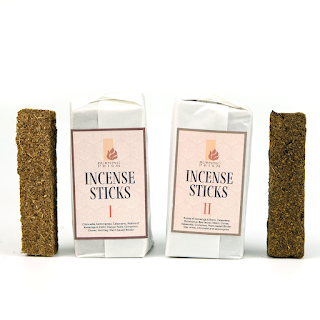54 plant species were identified and many are commonly known plants or trees. Here are a few of the list:
- Acacia
- Lemongrass
- Neem
- Gmelina
- Sambong
- Lagundi
While there's a general lack of local study to validate these herbs as insect repellants, indigenous use of these give us a starting point to consider seriously looking at their usefulness. Most likely, the repellent actions come from essential oils of these plants, but there are also other compounds that are released in the air when these plants are burned to create smoke, or when they're crushed as poultice and applied extracts to skin.
Inspired by the knowledge of the natives and their use of local plants in repelling insects, Burning Prism created Incense Sticks that produces fragrant smoke meant to clear spaces of unwanted vibes and insects. Using a blend of plant-based ingredients like rosins from Elemi and Manila Copal (these rosins are what's left after distillation of tree resins to extract essential oils of the Philippines), dried Neem leaves, dried Calamansi, dried Kakawate leaves, and some spices, the aromatic smoke it produces is easy on the nose.


